Chip in Now to Stand Up for Working People
Working people need a voice more than ever and Working America is making that happen.
Working people need a voice more than ever and Working America is making that happen.
Matt Morrison
11/04/2022
As we close in on the final days of these midterm elections and hear from many readers a mix of pessimism and hopefulness, it bears restating what we have learned — over and over again — from the millions of voters we engage at the doors, on their cell phones and computers, and in their mailboxes.
This moment is not about an election. It is about the voters, the hundreds of days between elections, and the thousands of experiences they have every day.
The more we appreciate that lesson, the more reason we have to shift our mood towards hopefulness and away from pessimism.
Those of you who have known us for years recognize us by the army of Working America’s canvassers knocking on doors in our red t-shirts. Those newer to our community may know us mainly for the digital and remote organizing tools that generated hundreds of thousands of votes for Joe Biden and Kamala Harris last cycle.
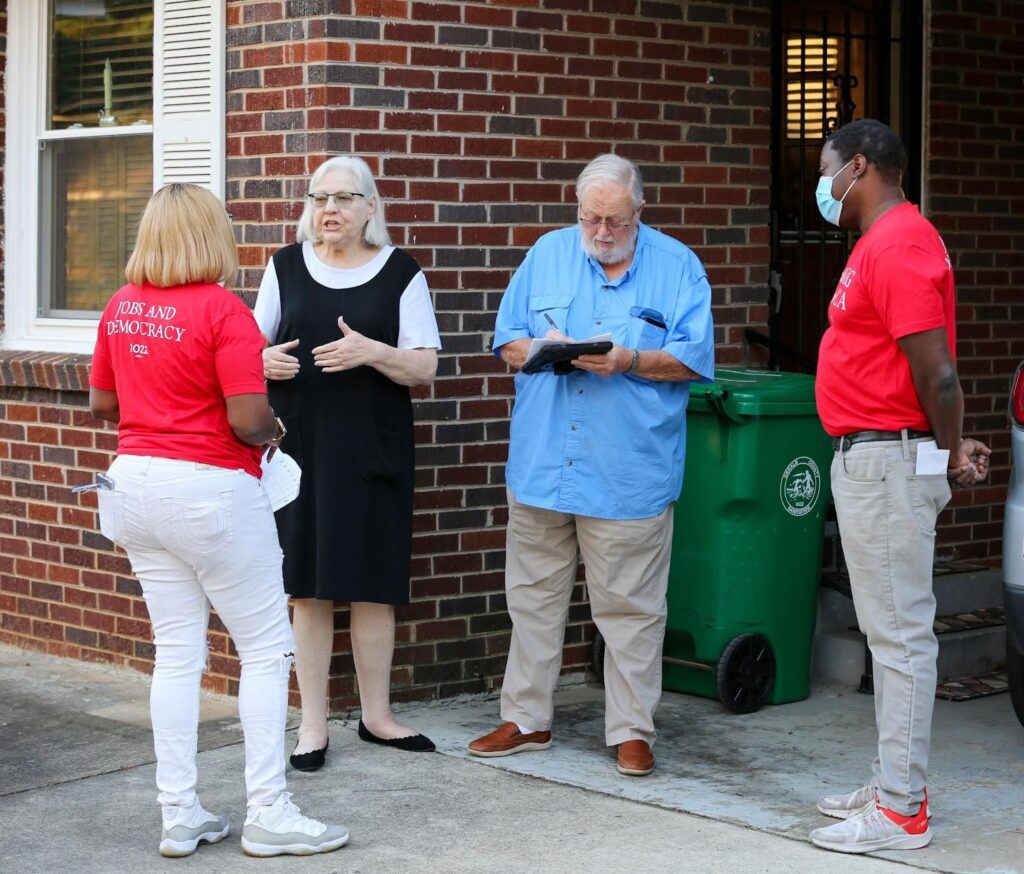
What those tactics have in common is that we lead with listening to working people, and we let their voices drive our politics and organizing. Whether that’s by doing old-fashioned door-knocking one block at a time, or deploying large-scale digital outreach that reaches millions in minutes, our goal is not to carry the candidates’ messages, it’s to bridge the divide between the everyday lives of people and our politics.
To do that work effectively, it’s often necessary to make order out of chaos — to reduce the complex motivations of millions of voters down to simple concepts that can be communicated in short conversations and updates, whether that’s about abortion rights or inflation. But the reality is that the cacophony of voter motivations is so much richer than that.
To illustrate what we mean, we have used our monthly texting program to collect open-ended responses from 873,689 voters in battleground states. We created word-cloud illustrations of the most-used words. The bigger the word, the more often people used it when we asked them what is motivating their vote.
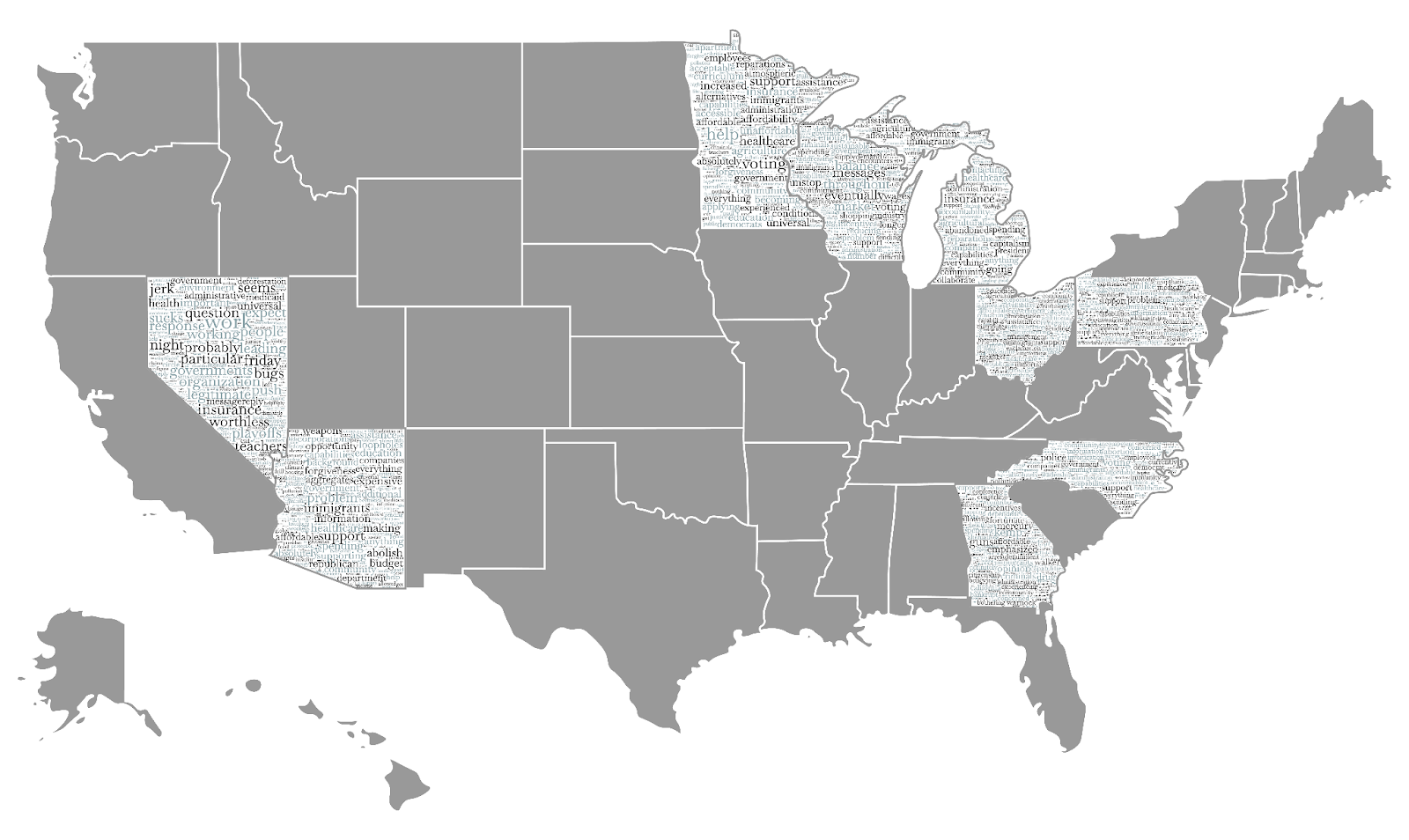

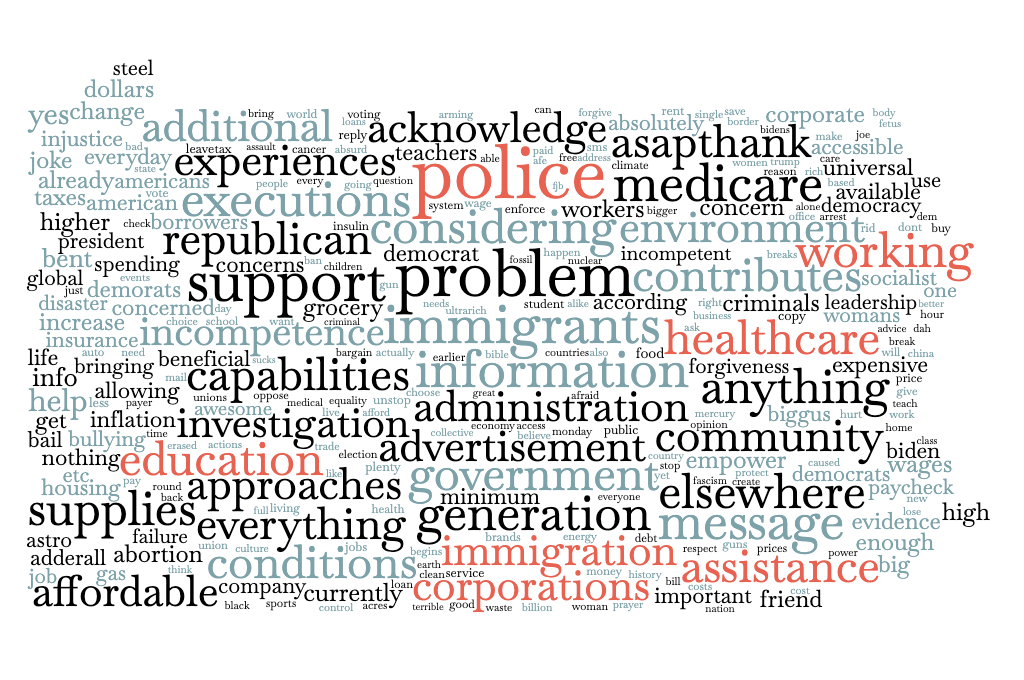

When we look closely at a state like Pennsylvania, we can see that voters are certainly reflecting back the messages that Democrat and Republican campaigns have hammered at in ads: immigration, police, and healthcare. But voters also tell us they’re concerned about the issues that we know are core to a working-class agenda and that perennially drive voter concerns: education, working, and assistance. Concern about corporations is also notable.
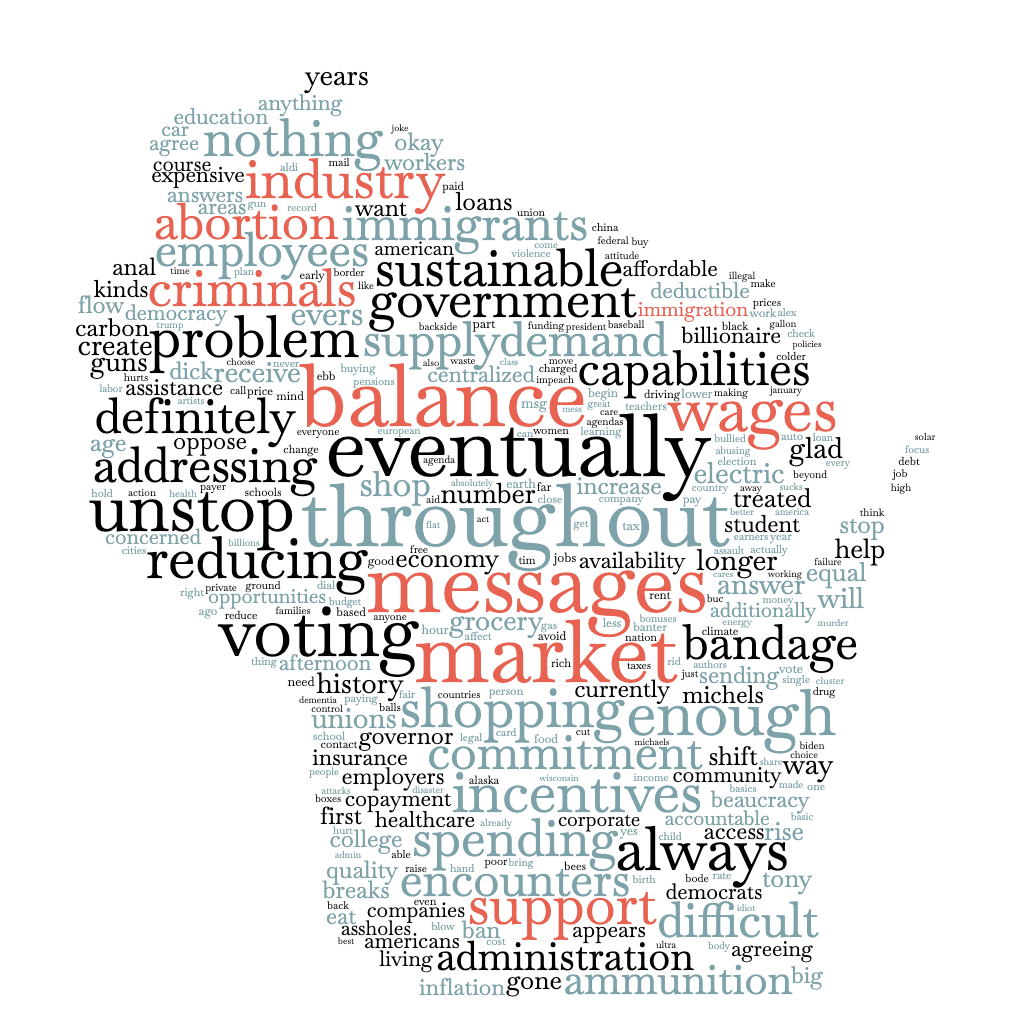

We see some of the same political themes in Wisconsin: immigration, criminals, and abortion come up, but so to do wages, industry, support, and market. Voters also wanted to talk about more abstract topics, such as balance and messages. Notably missing is any major mention of the GOP’s favorite attack line: inflation.
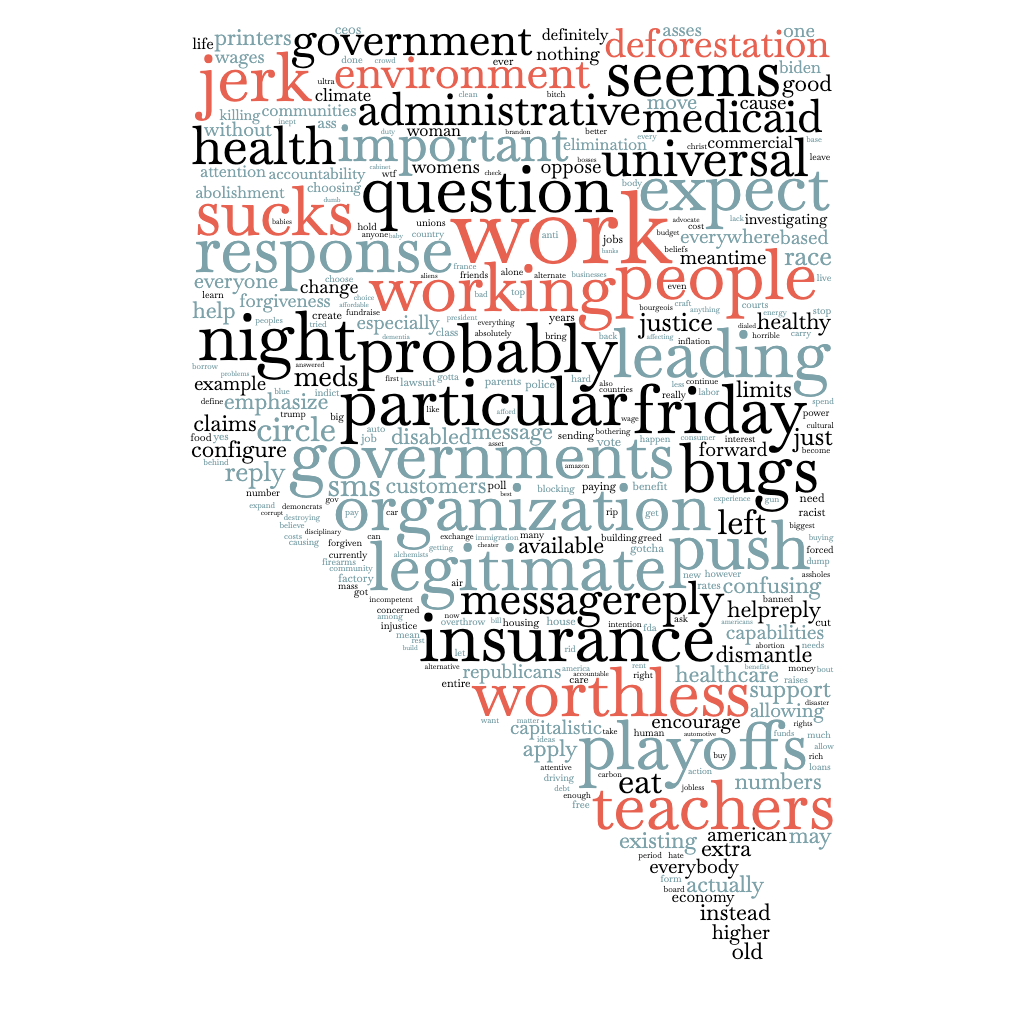

Nevada voters are a lot more focused on work, and working people, and occupations like teachers. Interestingly for a Southwest state, immigration was not a major topic, nor was inflation. Both deforestation and environment are driving voters here, issues that are getting little discussion nationally this cycle. People in Nevada also seem to be more comfortable expressing a sour mood, using terms like jerk, sucks and worthless.
(Click here to see the feedback from other states.)
We look at similar data from digital advertising, Google Search trends and the like, all colored by what we hear at the front door, to shape our understanding of what is most important to voters. (It’s interesting to see what’s missing here: few mentions of either Trump or Biden, little discussion of democracy or January 6. Nothing about the deficit. The issues that are often front of mind for the politics-obsessed do not drive the voters we speak to.)
What we take from all of these patterns is that even the most pointed political messages around immigration, crime, abortion rights, or healthcare have to break through a lot of other stuff that is on the minds of voters.
We use this information to help shape communications content, then test what resonates via randomized control trials. This listening + analytics strategy will add hundreds of thousands of votes for Democrats this year that are not yet reflected in the nail-biting polls. The result is not always intuitive, but it is highly effective. For example, based on a series of randomized control trials we know that our strongest performing text message in support of the Democratic Pennsylvania Gubernatorial candidate will win 19,039 extra votes for Josh Shapiro.
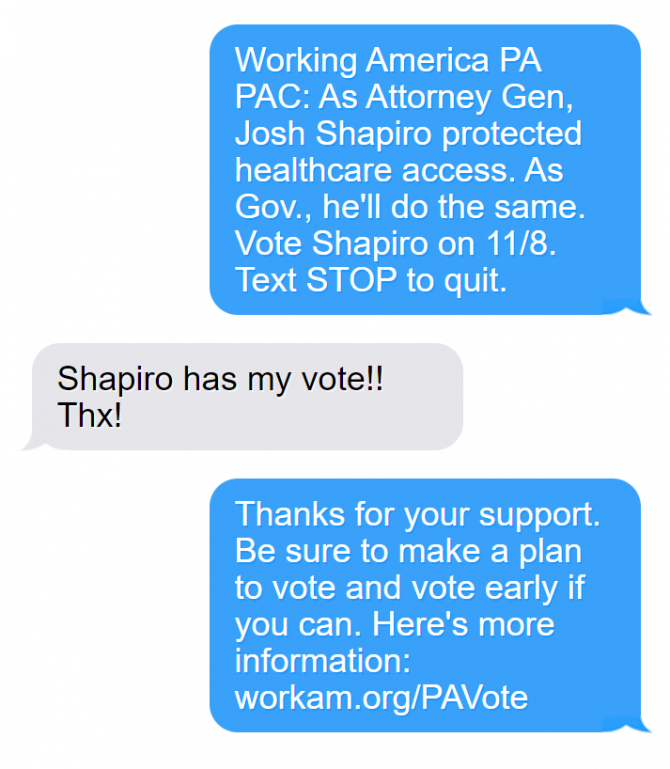

This is why we spend so much effort texting and talking with millions of voters in battleground states. We are influencing the election at scale on the issues that matter to working class people. In our next update, we will say more about how we’re using these issues to win votes in critical states. Until then, thank you for your support of Working America.
See you on the doors,
Matt Morrison
We use cookies and other tracking technologies on our website. Examples of uses are to enable to improve your browsing experience on our website and show you content that is relevant to you.